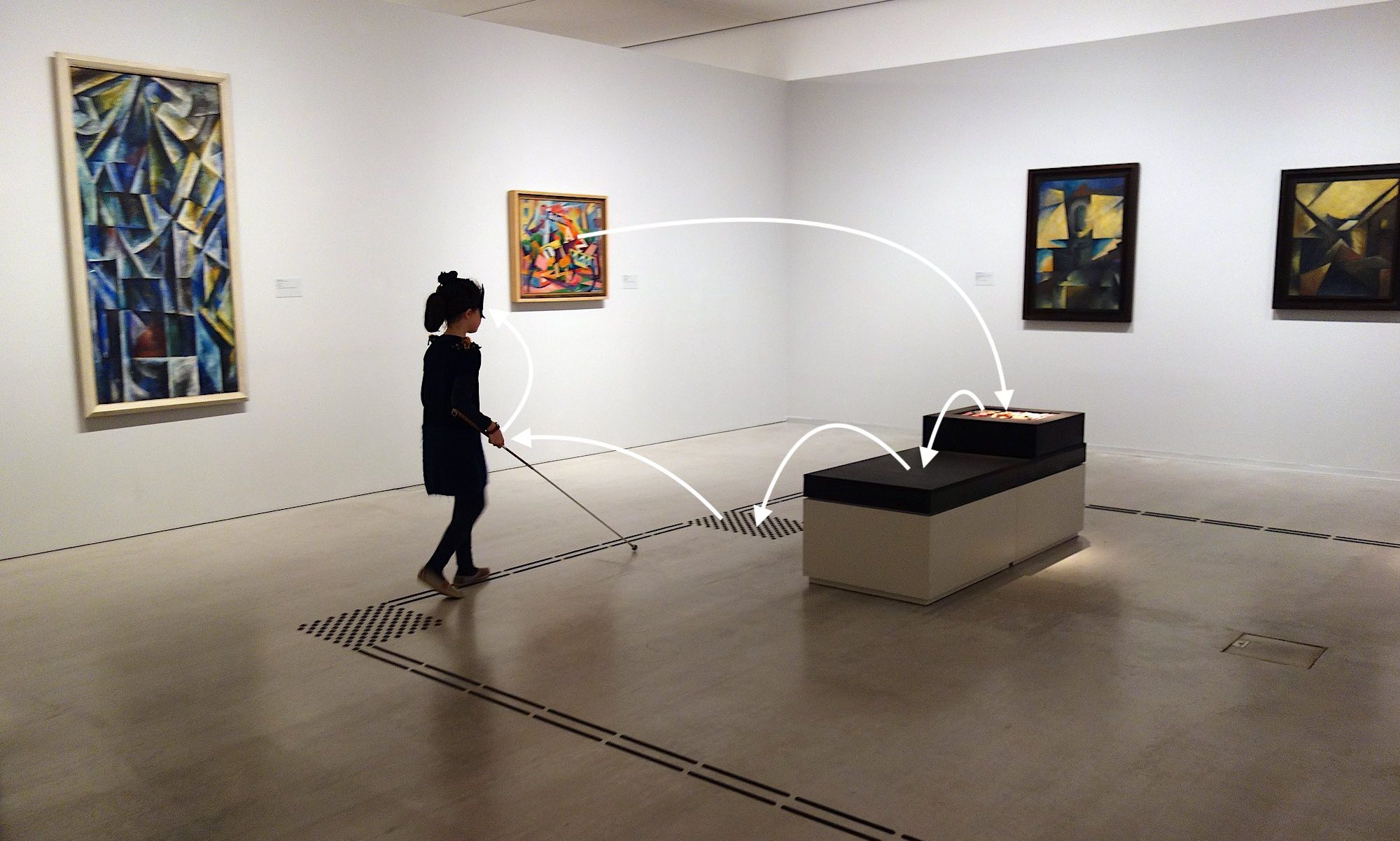Anette Bach
Can art be comprehended?
A Rodin exhibition at the Folkwang Museum in Essen! For me an event! The years of my life when I was able to see were characterized by joy and interest in art. I loved drawing, but also paintings and sculpture. Even though I can no longer see, my interest in, I would even say my need for art has not changed. So I go to Essen. I remember Rodin’s works well. The famous „Thinker,“ „The Burghers of Calais,“ and first „The KUSS.“ What would the exhibition bring? Pure frustration! I was not allowed to touch anything.
I did not like to believe it at all. What could I destroy in stone sculptures if I only touched them with my hands? I was not allowed to touch anything even through a silk cloth that was laid on. I begged, scolded, argued. The acidic air of the Ruhr, the flies, spiders and dust would surely pose a greater threat to the integrity of the artwork. Nothing to do!
I think that’s not the way to do it! I too know, of course, that it would not be reasonable to open all museum and exhibition contents to every groping hand. But there is much more possible than is conceded. Certainly, I have often succeeded in organizing guided tours in which the showcases were opened after all or the boundary grids were pushed aside. But that was always a matter of luck and depended on the good will and high-handedness of the respective guide. I would like to see a change in thinking. All exhibitors should be obliged to make their exhibition accessible to visually impaired people. There are concepts for this and more can be developed. Exhibitors should have to have convincing arguments for what is not possible. There will always be such things, but it must not happen that we are forced into the role of supplicants, persuaders or rioters who demand something that is supposedly impossible.
If a fairy godmother ever came my way, I would wish that perhaps every state would create a facility that is chock full of models. There are so many magnificent, exciting and incredible things that people have created: The Inca’s buildings, the Taj Mahal, the Sydney Opera House or the Elbphilharmonie. Even if I could go everywhere and be allowed to walk around and touch everything, most of it would still not be accessible. I wouldn’t even recognize the David that Michelangelo created if I were allowed to climb around on the five-meter-high marble structure.
In the age of scanners and 3D printers, making models is probably just a matter of will.
My doorbell rings. Do fairies come through the front door?
About the author
Anette Bach heads the Hesse district group of the DVBS.
The 66-year-old organizes regular events on current topics and excursions with the leadership team, whose dates are published at dvbs-online.de and which are also open to interested guests.
The article was first published in Horus 2/2018 / Accessible Culture – Marburg Contributions to the Integration of the Blind and Visually Impaired. It was published here with the kind permission of the author.
